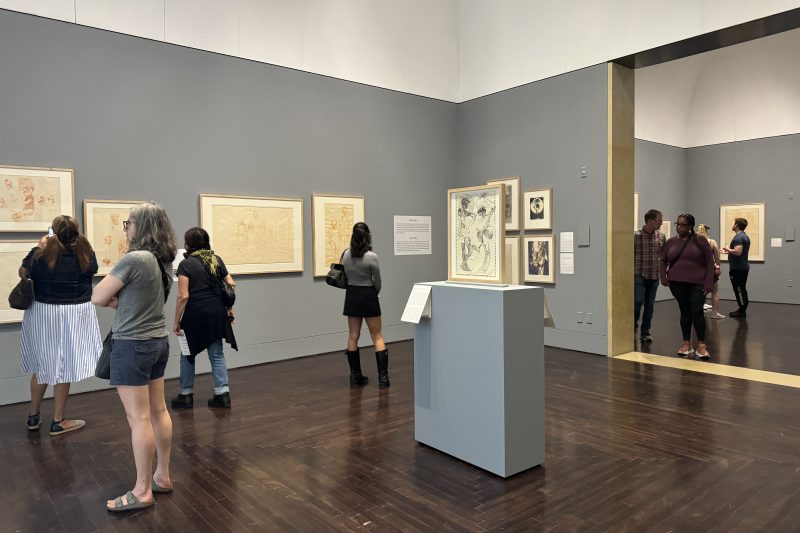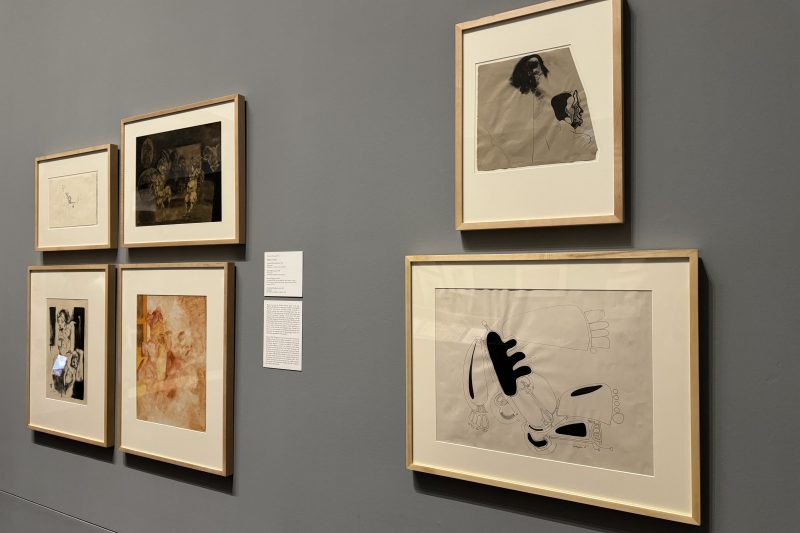Posthumous Art Exhibition Shares Hidden Work from Mexican Artist
By Amberlyn Negron
Reporting Texas TV
AUSTIN, Texas – The Blanton Museum of Art has a new exhibit in its Paper Vault gallery.
Latin American art curator Vanessa Davidson said “Meet Melecio Galván: The Secret Artist & His Mexican Contemporaries” is the first museum exhibition in the United States for the late Mexican artist.
“It’s important to note that Galván had an incredibly fruitful and productive career, but he mostly kept it among his circle and to himself,” Davidson said.
Galván died in 1982, and his family began to promote his work the following year to curators across Mexico and the U.S. Davidson said curators were astounded by Galván’s technique of using only paper and pen.
“One of the curators said that had he promoted his work he would have been recognized for what he really was, which is one of the best draftsmen of Mexico of the twentieth century,” Davidson said.
Blanton had six pieces of his artwork on displayed before this exhibition. After a large donation from collectors Jeffery and June Gold, the museum had nearly 50 pieces.
“By collecting this artist and his body of works in depth we’re able to put together a show that shows his trajectory during a certain critical time in his life,” Davidson said.
She said the exhibition also has work from some of Galván’s contemporaries, and to honor his heritage the art descriptions are in English and Spanish.

Guests view the exhibit in the Paper Vault gallery in Austin, Texas on April 9, 2024. (Amberlyn Negron/Reporting Texas TV)
Galván’s daughter and custodian to his art, Amaranta Galván Jiménez, helped put together the diverse exhibit. She said she’s proud her father is getting recognition even after his death.
“I feel really moved to see that art transcends death, and it can be communicated in different spaces without any barrier, something only art knows how to do,” Jiménez said.
She said her father often worked with a group called MIRA to display his art. MIRA collects Mexican Neographic art – a form of modern art with political subtexts which Galván focused on. Many of the exhibitions were in housing units or public spaces but not in museums because Jiménez said the artwork was considered controversial.
“His visual rhetoric was not received very well by authorities, because it contains socio-political critiques, and critiques against the military, the armed forces of all governments,” Jiménez said.
Galván’s art and its exposure in the exhibition is a chance for museums to tell diverse stories about socio-political issues across the world. UT Professor Cary Cordova specializes in Latin art representation and said museums curate stories from their collections, and if only one group is represented then fewer stories are told.
“They offer spaces for learning about the world, and if you go into a museum and you’re only learning one story. Then maybe that’s not as open as the museum would like to be, but it does matter for us to actually ask museums for the things that we would like to see,” Cordova said.

Melecio Galván was active in the Mexican neographic scene, a form of modern art that traditionally holds political subtexts. His work was critical of the Mexican government of the 1960s to 1970s. (Amberlyn Negron/Reporting Texas TV)
Davidson said the Blanton has hidden gems throughout but they only get noticed every so often.
“It just depends on how often you visit. We rotate our exhibitions very frequently, and every time you go you’re bound to find something new, and an unexpected world just like meeting Melecio Galván for the first time,” Davidson said.
Galván’s exhibit will be available to view until Aug. 25. UT students and staff can enter free with their UT ID cards. Guests can purchase tickets online at the Blanton website or in-person, and every Tuesday is free for all visitors.